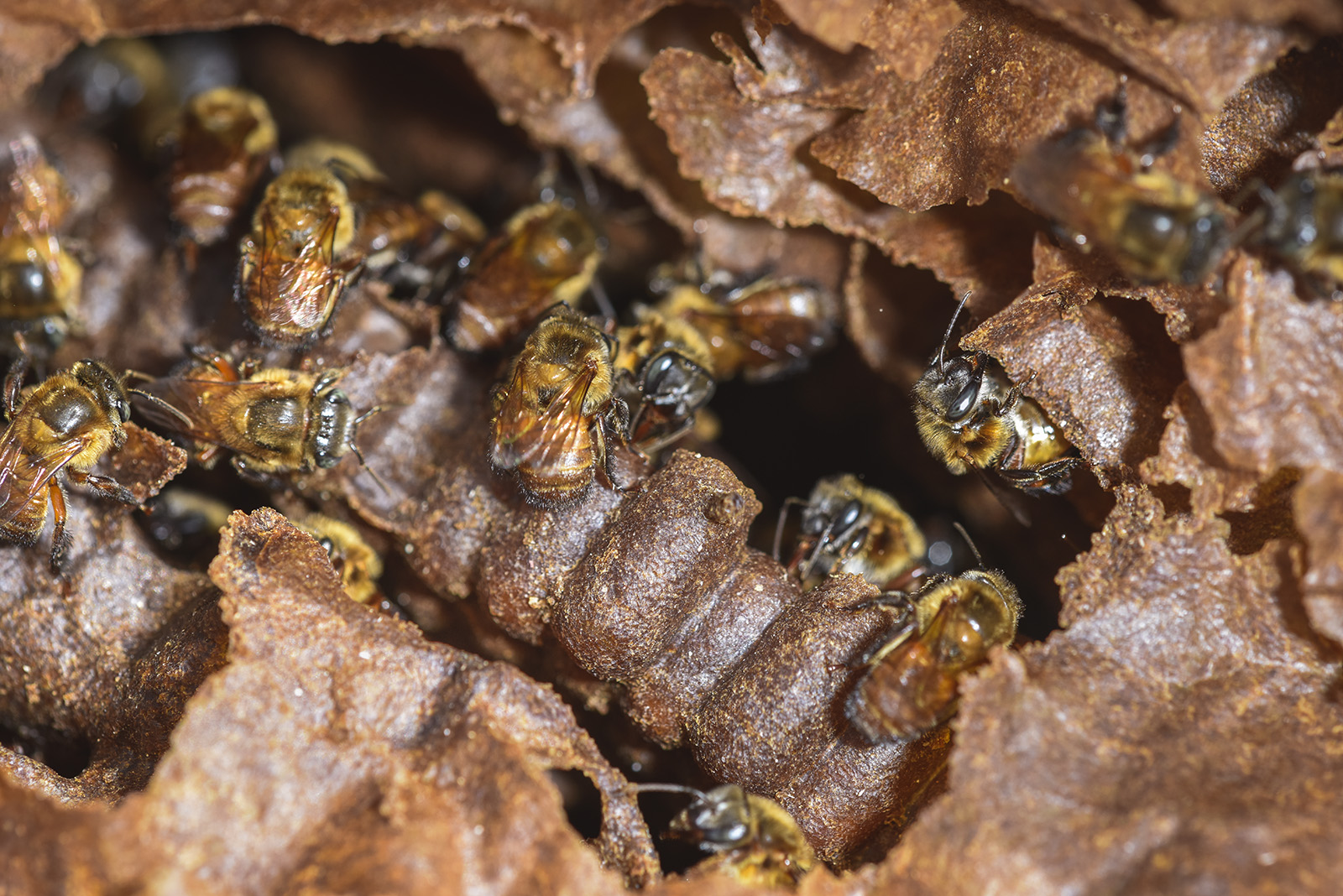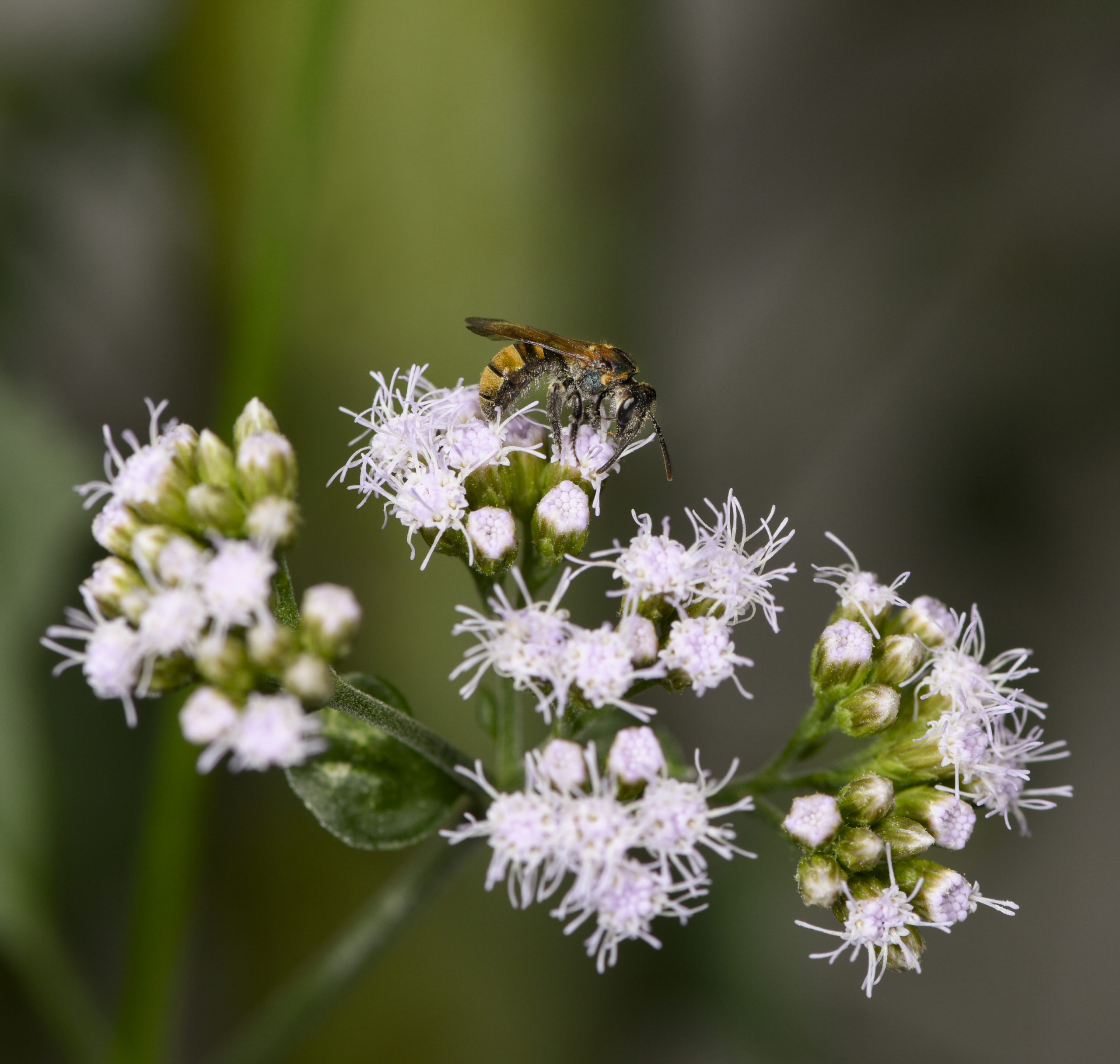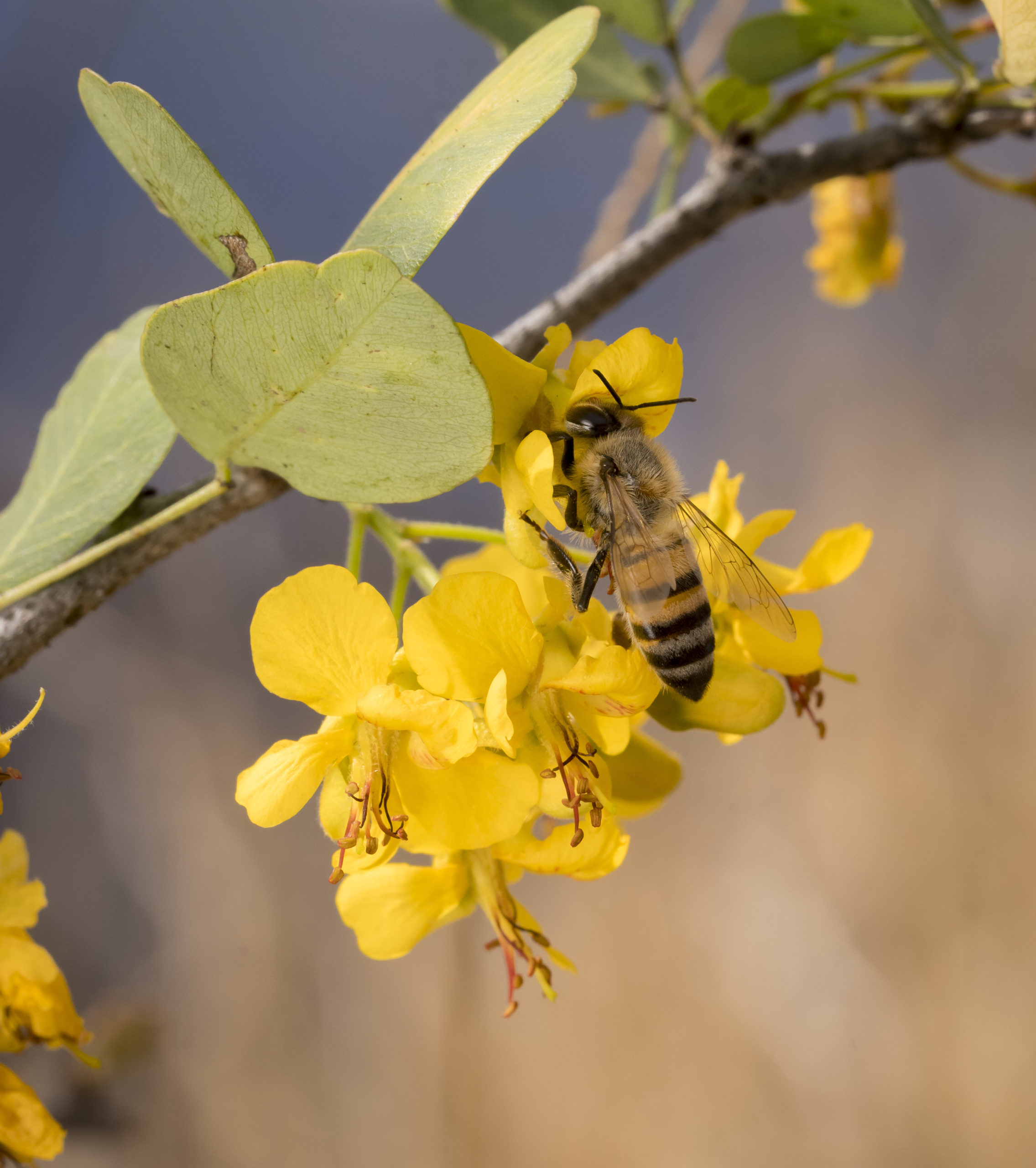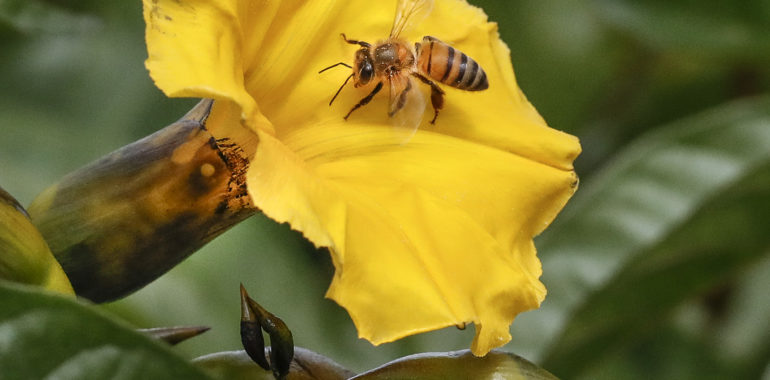Bees are considered one of the most important animals on the planet, they have benefited humans, plants, and the environment for a long time. By carrying pollen from one flower to another, bees and other pollinators enable not only the production of an abundance of fruits, nuts, and seeds but also more variety and better quality, contributing to food security and nutrition.
In 2017, the UN General Assembly unanimously proclaimed 20 May as World Bee Day and in 2018 the first celebration of this day took place.
Why a World Bee Day?
By commemorating World Bee Day each year, we can raise awareness of the essential role bees and other pollinators play in keeping people and the planet healthy, and on the many challenges, they face today. The date was chosen as the same day Anton Janša was born. He is a pioneer of modern apiculture from Slovenia, where beekeeping is an important agricultural activity with a long-standing tradition (FAO, 2021).
Today bees, pollinators, and many other insects are declining in abundance. This day provides an opportunity for all of us including governments, organizations, civil society, and concerned citizens, to promote actions that will protect and enhance pollinators and their habitats, improve their abundance and diversity, and support the sustainable development of beekeeping (FAO, 2021).
Bees and beekeeping play an important role in the environment and agricultural production, supporting rural livelihoods, providing rural jobs, and improving food security and nutrition.
At FLAAR we believe that one way to become more involved in caring for these incredible beings is to learn more about them, how they work, and how their actions in the ecosystem benefit us.
Here we tell you more about bees and the incredible world they encompass.

Working bees (genus Melipona) in their honeycomb, Rio Ixbolay. Photography by Nicholas Hellmuth – March 01, 2016
Who is the queen and what is her role? Hierarchies in the world of bees
Honey bees are social insects, which means that they live together in large and organized family groups. They need a lot of communication as well as complex nest constructions, environmental control, and division of labor. A honey bee colony typically consists of three kinds of adult bees: workers, drones, and a queen (Al-Khafaji et al., 2009).
Thousands of workers cooperate in nest building, food collection, and broom rearing. Each member has a definite task to perform but surviving and reproducing take the combined efforts of the entire colony. Individual bees cannot survive without the support of the colony. A colony has a single queen and a lot of drones during late spring and summer. The social structure of the colony is maintained by the presence of the queen. She is the only sexually developed female, her primary function is reproduction. A queen’s thorax is slightly larger than that of a worker, and she has neither pollen baskets nor functional wax glands (Al-Khafaji et al., 2009).
Drones (male bees) are the largest bees in the colony. They have no stinger, pollen baskets, or wax glands. Their main function is to fertilize the virgin queen during her mating flight. And finally, workers are the smallest and constitute the majority of bees occupying the colony. They are very important for us since they have specialized structures, such as wax glands and pollen baskets, which allow them to pollinate flowers (Al-Khafaji et al., 2009).

Bee pollinating Eupatorium perfoliatum flowers at FLAAR garden. Photography by Nicholas Hellmuth – February 20, 2018
The role of bees in our ecosystems
“If bees cease to exist, we will all become extinct” ¿Myth or reality?
Now that we know how bee colonies work, we can focus on the labor of worker bees. There’s a saying that’s been going on for several years but how true is it? Let’s find out.
Bees form part of a functionally important community of animals providing the vital service of pollination, which supports global ecosystems. Almost 90% of wild plants depend on animal pollination and they are the basis of the habitats that form the ecosystems supporting services and functions upon which we rely (WWF, 2019).
Pollination is also critical to crop production. The annual contribution of animal pollination to global crop production has been estimated at 235 billion – 577 billion US dollars worldwide. Crops allow for nutritionally diverse and healthy diets, and they also provide the raw materials for many processed foods, medicines, fiber, fuels, and construction materials. Our current consumption of fruits, vegetables, and other crops (such as coffee) could not be sustained if pollinator communities were lost (WWF, 2019).
Bees are believed to be the most efficient pollinators, as they rely upon pollen and nectar for feeding their offspring. This means they may visit more flowers and spend longer foraging than some other groups of flower visitors. The problem now is that bees face a range of complex threats, which have the potential to affect the abundance and diversity of species, and most importantly for us, the health of populations.
Local and regional declines of solitary wild bees, bumblebees, and honeybees come from habitat loss, agricultural intensification, and pesticide use in both Europe and America (Steffan et al., 2005). Habitat loss, fragmentation, and degradation are apparently the most important factors driving bee declines through the reduction of food and nesting resources available to pollinators. Some researchers assume that a few remaining generalist pollinators will ensure pollination services in the future and that may affect human health in the long term and it may cause our extinction if bees cease to exist.

Bee pollinating brazilwood flower (Haematoxylum brasiletto) in road to Zacapa. Photography by David Arrivillaga – January 12, 2021
So, what actions can I take as a citizen to take care of bees and other pollinators?
Environmental pollution and the increase of pesticides also influence bee populations in a very negative way, as well as anthropogenic climate change. So, this is when we, as citizens, can contribute to guaranteeing the survival of pollinating bees.
Some simple things we can add to our lives to help the bees are:
- If you have space in your garden, plant diverse types of flowers and try to make sure they bloom from April through November. The most critical time for the bee in early spring and late fall.
- Allow clover to come into your lawn naturally, it has good pollen and nectar count and it feeds honey bees!
- Avoid purchasing plants that may have been treated with insecticides which could harm bees when they collect the plant’s nectar or pollen. When you purchase plants, ask your local garden center about bee-friendly plants.
- Choose local organic honey. Some imported honey contains corn-based sugar. Make sure you buy true bee-friendly honey.
- Get involved in bee-friendly associations and communities. By attending talks, spreading the word, and giving donations you will be helping more people to know how important it is to take care of bees! If you live in Guatemala, here are some associations and local honey distributors you can check out: Abejas Mayas, Abeja Reina Gt, @ecoalpispa on Instagram, and Abejas Nativas GT – Cecon, Usac on Facebook
Finally, we leave you with some fun facts that you may not have known about bees so you get even more excited to take care of them.
¿Did you know…?
- The word “bee” comes from the latin word Apicula which means “little bee”, this etymology makes sense because they are indeed very little animals.
- There are bees all around the world except in the Antarctic.
- Around 2012, some beekeepers in northwestern France saw that bees suddenly started producing blue and green honey instead of yellow or brown. Why? The bees were feeding on the dyes of M&M bars. While bees generally feed on flower nectar, this group of bees preferred something sweeter and more artificial. After being notified, the factory owners decided to clean their waste containers better and store them in a closed space not accessible to bees.
- Also, have you ever wondered what’s the difference between bees and wasps? It’s pretty simple, bees make their combs with wax while wasps make them with chewed cardboard-like fibers. You can learn more with this infographic.
- Finally, do you know how bees produce honey? When bees suck nectar from flowers, they deposit it in a special stomach that they have which is so big it allows them to carry their own weight in nectar! When the bees arrive at their hive, they transfer the nectar to bees inside that are in charge of making honey. These bees chew the nectar for about half an hour and add enzymes to break it down and form a simple syrup that will eventually turn into honey!
Bees are certainly very intelligent, organized, and incredible creatures that also help us to have a better life, so remember to thank them next time you see them!
If you want to read more about bees, we suggest you check out our photo essay on native stingless bees in Guatemala.
BIBLIOGRAPHY
- 2009
- Life in the colonies: Hierarchical demography of social organisms. Ecology, Vol. 90, No. 2. Pages 556-566.
- 2021
- World Bee Day. Available online:
https://www.fao.org/world-bee-day/en/
- 2005
- Pollinator diversity and crop pollination services are at risk. TRENDS in Ecology and Evolution, Vol. 20, No. 12. Pages 651-652.
- 2019
- Bees under siege from habitat loss, climate change and pesticides. 124 pages.
Here are more reference links to pages about bees that were created by the FLAAR Mesoamerica team:

